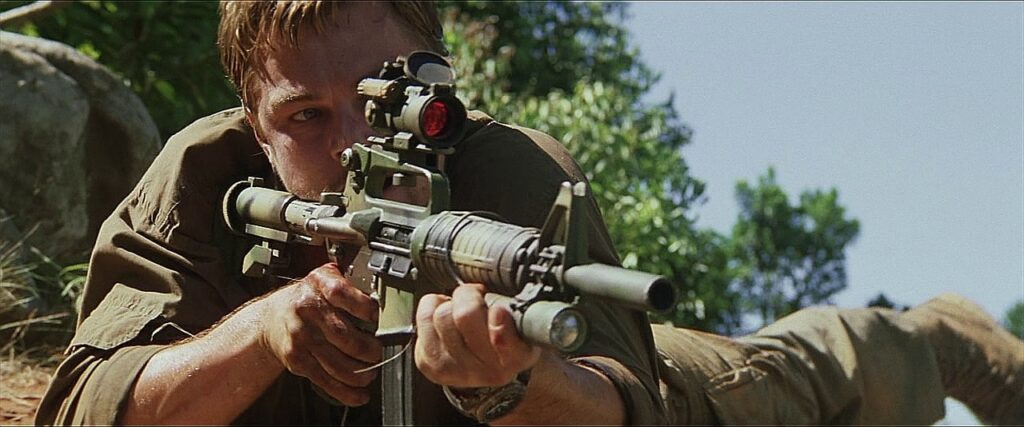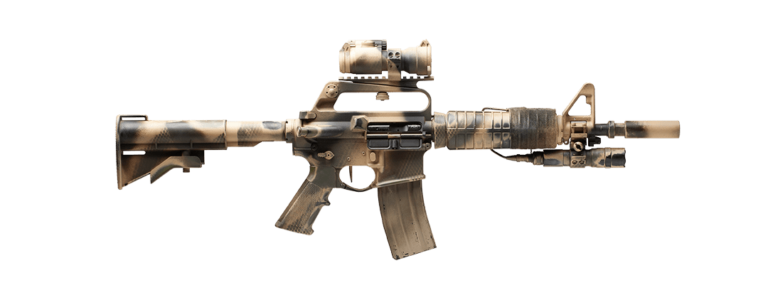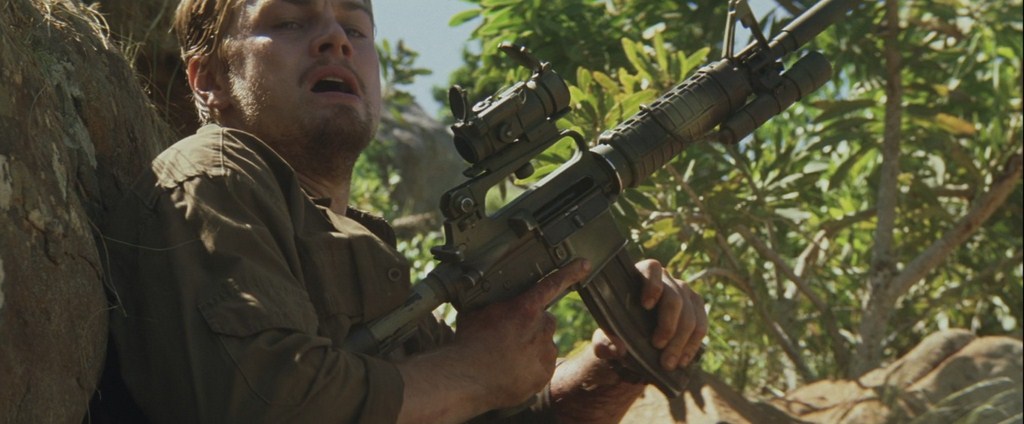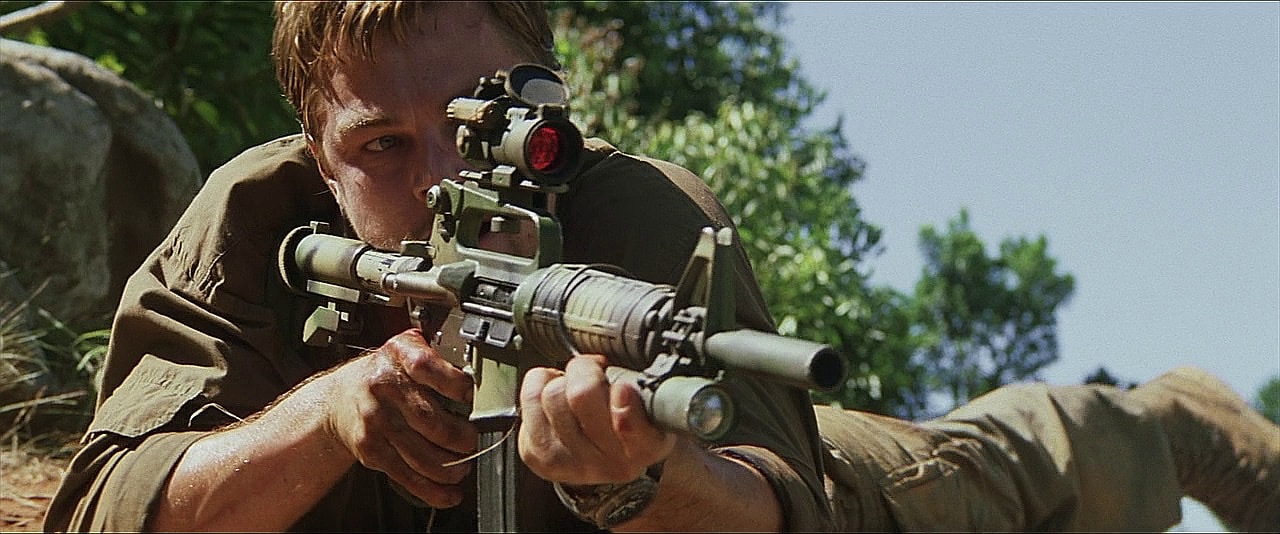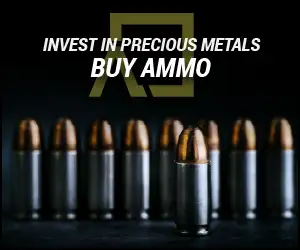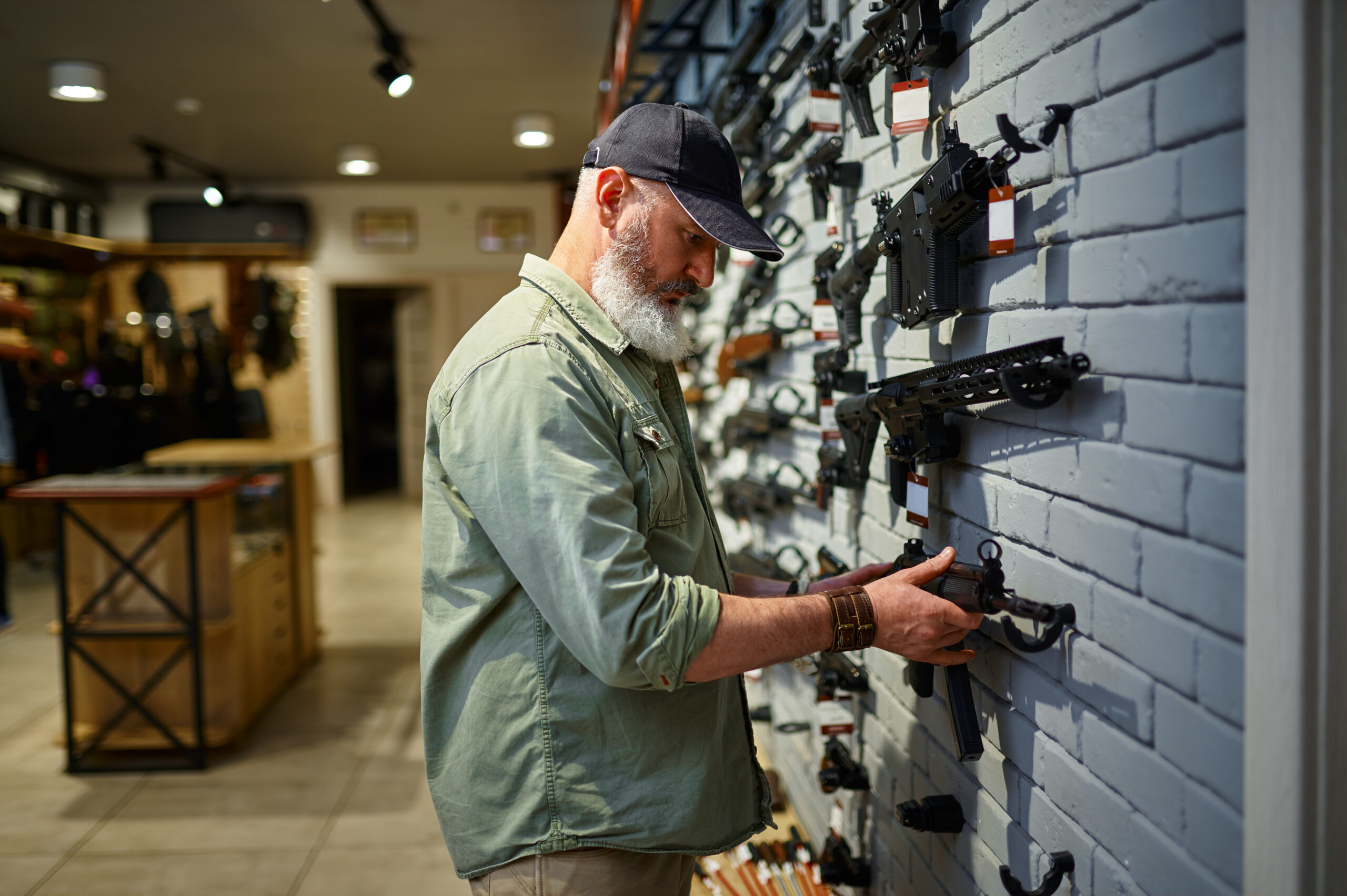The CAR-15, is more than just “the gun from Blood Diamond”, it’s a beast in the world of firearms, it is also the compact cousin of the M16 rifle. Born in the 1960s, this rifle was built for the tough guys who needed something lighter and more agile than the bulkier M16. The CAR-15 isn’t just a gun; it’s a piece of history, a testament to American ingenuity and power.
In 2006, “Blood Diamond” hit the screens, and boy, did it make a splash! Set in the Sierra Leone Civil War, this film had Leonardo DiCaprio playing a tough-as-nails mercenary with the CAR-15 as his trusty sidekick. This wasn’t just a prop; it was a statement. The CAR-15’s presence added a raw, gritty edge to the film, making the action scenes more visceral and real.
Edward Zwick, the director, knew what he was doing when he picked the CAR-15 for the movie. It wasn’t just about looks; it was about authenticity. The CAR-15’s compact design and battle-tested reputation made it the perfect choice for a film set in a war zone. It was a nod to the rifle’s real-world impact in conflicts, not just a piece of Hollywood flair.
When you talk about the CAR-15’s role in conflicts like the one shown in “Blood Diamond,” you’re not just talking guns and ammo; you’re talking about a chapter of raw, unfiltered history. This compact powerhouse, a leaner, meaner version of the M16, found its way into the thick of guerrilla warfare and rebel conflicts, where rules are scarce and survival is the game. In environments like the Sierra Leone Civil War, the CAR-15 wasn’t just a firearm; it was a lifeline.
The CAR-15, with its rugged build and rapid-fire capability, became the go-to for fighters who needed to move fast and hit hard. In the dense jungles and chaotic urban landscapes where these conflicts raged, its lightweight and compact size were not just convenient, they were game-changers. It allowed fighters to navigate tight spaces and engage in close-quarter battles, with a reliability that could mean the difference between life and death. The rifle’s presence in these conflicts was a testament to its adaptability and effectiveness in the most extreme conditions.
In these war zones, where every day was a battle for survival, the CAR-15 emerged as more than just a tool of war. It became a symbol of power and resistance, a constant companion in the fight against larger, better-equipped forces. The rifle’s ability to provide high firepower in a compact form made it a favorite among various militant groups, often turning the tide in skirmishes and guerilla strikes. The CAR-15’s story in these conflicts is not just about a firearm; it’s about resilience, ingenuity, and the harsh realities of war where this rifle played a pivotal, though controversial, role.
The CAR-15, a legend in the world of modern firearms, continues to hold a special place among enthusiasts and professionals alike. Its evolution from a military staple to a civilian favorite underscores its enduring appeal. Today, you’ll find the CAR-15 in various forms, from original models cherished by collectors to modernized versions packed with the latest firearm tech. It’s a common sight at shooting ranges and is often chosen for personal defense due to its compact size, familiar controls, and the sheer reliability it offers. Its versatility allows for customization, making it a canvas for shooters to tailor it to their precise needs, whether for sport shooting, home defense, or just the joy of owning a piece of firearm history.
However, the CAR-15, like any firearm, is not without its drawbacks, especially when you dive into the ballistics. The shorter barrel length, while great for maneuverability and weight reduction, comes with a trade-off in bullet velocity and accuracy over long distances. The 5.56×45mm NATO round it fires is optimized for longer barrels, so when it’s fired from the shorter barrel of the CAR-15, some of its ballistic efficiency is lost. This can result in a reduced effective range and less impact power at longer ranges compared to its full-sized counterparts. Additionally, the shorter barrel can lead to a louder report and more pronounced muzzle flash, which can be a disadvantage in certain tactical situations.
These factors make the CAR-15 a superb choice for close to mid-range engagements but less ideal for scenarios requiring long-distance precision.
Let’s talk about what it takes to legally own a CAR-15, keeping in mind some of its unique characteristics. In the U.S., owning a CAR-15 can be a bit of a journey, considering its classification as a Short Barreled Rifle (SBR) and the fact that its Moderator muzzle device is often classified as a suppressor by the ATF.
Now, to legally own any SBR, including the CAR-15, you’ve got to navigate the waters of the National Firearms Act (NFA). This means you’re in for some paperwork, a $200 tax stamp, and a waiting period that can feel like forever. It’s a little harder than just scoring some backstage passes to see Britney. You’ll need to submit Form 1 or Form 4, depending on whether you’re making or buying the SBR, and pass an ATF background check.
Then there’s the Moderator muzzle device. Since it’s classified as a suppressor, you’re looking at another round of NFA paperwork and an additional tax stamp for it. Owning a suppressor comes with its own set of rules and regulations, which can vary from state to state. In some states, they’re a big no-no, while in others, they just require the standard NFA process.
Bottom line: if you’re looking to get your hands on a CAR-15, be prepared for some serious paperwork, fees, and patience. Make sure you’re up to speed on both federal and state laws, because when it comes to NFA items, it’s better to be safe than sorry. And remember, while the process might seem daunting, for gun enthusiasts, the payoff is often worth it.
The CAR-15 wasn’t just “Leo’s gun in Blood Diamond”; it was a character in its own right. It symbolized the harsh realities of war, the struggle for survival, and the unbreakable human spirit. Next time you see “Blood Diamond,” remember the CAR-15 – not just a prop, but a pivotal piece of the story, with a rich history and a legacy that continues to resonate in the world of firearms.
Got thoughts on the CAR-15 or “Blood Diamond”? Let’s keep the conversation alive about this epic union of Hollywood and hardcore firearm history. Comment below!
